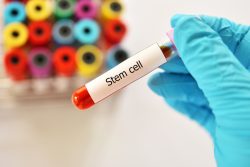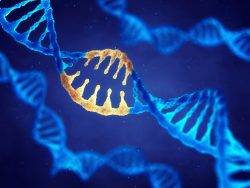Connection Between Eye Health, Diet & Lifespan Uncovered
 A team has demonstrated an association between circadian rhythms, health, diet, and lifespan. It was an unexpected discovery that the fly eye actually drives the process of aging.
A team has demonstrated an association between circadian rhythms, health, diet, and lifespan. It was an unexpected discovery that the fly eye actually drives the process of aging.
Earlier studies have shown in people that there is a link between poor health and eye disorders. The study contends that there is more evidence that dysfunction in the eye can prompt problems in a variety of other tissues. They are now demonstrating that not only will fasting enhance eyesight, but also that the eye will actually play a part that can influence lifespan.
This discovery, in the fruit fly, that the eye itself can directly influence lifespan, surprised the team.
They determined the reason for the link is in circadian clocks, the molecular process within each cell of all organisms. This evolution has adapted to stresses such as variations in temperature and light due to the sun’s rising and setting everyday. These oscillations that occur every 24 hours affect complex behaviors of animals such as prey-predator interactions and the wake/sleep cycles. They also fine tune the temporal modulation of molecular processes of protein translation and gene transcription.
The team showed that fruit flies that are on on restrictive diet had notable shifts in their circadian rhythms and also in extending their lifespan.
A fruit flies lifespan is short which makes it a great model that allowed the team to screen for a variety of things at one time. The study started with a broad survey to determine what genes will oscillate in a circadian fashion when the fruit flies on an unrestricted diet were compared to those that were fed just 10% of the protein of the same diet.
They immediately saw many genes that were diet responsive and in addition exhibited vascillations at different points in time or were rhythmic. They also found that the most activated rhythmic genes from the restrictive diet all seemed to be from the eye, primarily from photoreceptors which are the particular neurons in the retina that are light responsive.
A group of experiments were then done. They were designed to determine how function of the eye can affect how a restrictive diet can extend lifespan. One example was an experiment that showed that keeping the fruit flies in continual darkness seemed to extend their lifespan. This seemed strange to the team. They thought that light was essential for circadian rhythm.
They then utilized bioinformatics to ask the question if the genes in the eye, that are also responsive and rhythmic to dietary restriction, can influence lifespan? Their answer was yes!
We think of the eye as essential for vision. It’s not thought of as something that has to protect that whole organism.
Because the eyes are exposed to everything, the immune defenses are crucially active and can lead to inflammation. If this is present for long time periods, it can lead to or worsen many common diseases that can be chronic. Also, light can cause photoreceptor degeneration which can lead to inflammation.
Constantly looking at phone screens and computers and exposure to light pollution into the night are conditions that are very disturbing to circadian clocks. It can mess up eye protection that could lead to consequences besides just vision and can cause damage to the brain and the body.
There is a lot to understand about the eye’s role in the overall lifespan and health of an organism. This includes asking how the eye can influence lifespan and if the identical effect applies to other organisms?
The most important question that has been raised by this study is how it might apply to people and do photoreceptors in mammals influence lifespan? The team believes probably not as much as is does to the fruit fly, observing that most of the energy in a fruit fly is primarily to its eye. However, since photoreceptors are just specialized neurons, the stronger association is how circadian function plays in neurons in general. This is in particular with restrictions in diet, and how those can be accumulated to maintain nueronal function during the aging process.
Once researchers determine how these processes work, they can start to address the molecular clock to delay aging. It may be that people could maintain vision through activating the clocks that are within the eyes possibly through drugs, diet, and lifestyle changes.
To view the original scientific study click below:
Dietary restriction and the transcription factor clock delay eye aging to extend lifespan in Drosophila Melanogaster



 New research from the Univ. of Virginia could assist scientists in understanding how specific genes affect the bodies development. It could show how they play in diseases that are developmental and could possibly help develop new therapies.
New research from the Univ. of Virginia could assist scientists in understanding how specific genes affect the bodies development. It could show how they play in diseases that are developmental and could possibly help develop new therapies. A team has investigated genes that could be linked to lifespan and has found specific characteristics of certain genes. They have discovered that there are 2 regulatory systems that control gene expression. They are the pluripotency and circardian networks and are crucial to longevity. This information has important implications in the understanding of the evolution of longevity and also in offering new objectives to combat diseases that are age related.
A team has investigated genes that could be linked to lifespan and has found specific characteristics of certain genes. They have discovered that there are 2 regulatory systems that control gene expression. They are the pluripotency and circardian networks and are crucial to longevity. This information has important implications in the understanding of the evolution of longevity and also in offering new objectives to combat diseases that are age related. Foods that contain polyphenols can help counter inflammation in the older population by altering the microbiota in the intestines. They also activate the production of IPA (indole 3-propionic acid), which is a metabolite that comes from the decline of tryptophan caused by bacteria in the intestines.
Foods that contain polyphenols can help counter inflammation in the older population by altering the microbiota in the intestines. They also activate the production of IPA (indole 3-propionic acid), which is a metabolite that comes from the decline of tryptophan caused by bacteria in the intestines.  A new study has indicated that not getting enough sleep can negatively affect corneal stem cells in both the long term and short term potentially leading to the development of eye disease and impairment of vision.
A new study has indicated that not getting enough sleep can negatively affect corneal stem cells in both the long term and short term potentially leading to the development of eye disease and impairment of vision.  Researchers have discovered a new approach that will rejuvenate skin cells. The approach has enabled them to reverse the cellular biological clock by about 30 years based on molecular measures. The cells that were somewhat rejuvenated indicated signs of acting more like cells that were younger in experiments that involved imitating a wound to the skin. The study, still in its early stages, might have indications for regenerative medicine, primarily if it is able to replicate in other types of cells.
Researchers have discovered a new approach that will rejuvenate skin cells. The approach has enabled them to reverse the cellular biological clock by about 30 years based on molecular measures. The cells that were somewhat rejuvenated indicated signs of acting more like cells that were younger in experiments that involved imitating a wound to the skin. The study, still in its early stages, might have indications for regenerative medicine, primarily if it is able to replicate in other types of cells. Recent research has offered hope for human dieters. In the study, rats were put on a diet for 30 days and were intensely exercised. The results showed that they resisted cues for normally favored pellets that were high fat. The procedure tested the level of resistance known as “incubation of craving”, which states that the longer a desired item is denied, the more difficult it can be to ignore signals for it.
Recent research has offered hope for human dieters. In the study, rats were put on a diet for 30 days and were intensely exercised. The results showed that they resisted cues for normally favored pellets that were high fat. The procedure tested the level of resistance known as “incubation of craving”, which states that the longer a desired item is denied, the more difficult it can be to ignore signals for it. Neuroscientists have discovered that breathing will coordinate neuronal activity in the brain while it is at rest or sleep.
Neuroscientists have discovered that breathing will coordinate neuronal activity in the brain while it is at rest or sleep.  Loss of hearing due to noise, certain cancer drugs and aging cannot be reversed due to researchers not being able to reprogram cells to evolve into the inner and outer ear sensory cells. This is fundamental for hearing after they have died. However, researchers have now found a particular master gene to program ear hair cells into an inner or outer cell. This overcomes a significant hurdle that has prevented these cells from developing and hearing to be restored.
Loss of hearing due to noise, certain cancer drugs and aging cannot be reversed due to researchers not being able to reprogram cells to evolve into the inner and outer ear sensory cells. This is fundamental for hearing after they have died. However, researchers have now found a particular master gene to program ear hair cells into an inner or outer cell. This overcomes a significant hurdle that has prevented these cells from developing and hearing to be restored. A new study has shown that seven hours of sleep a night is optimal for those in their mid to older ages. And, too much or too little sleep is linked with poorer mental health and cognitive performance.
A new study has shown that seven hours of sleep a night is optimal for those in their mid to older ages. And, too much or too little sleep is linked with poorer mental health and cognitive performance.